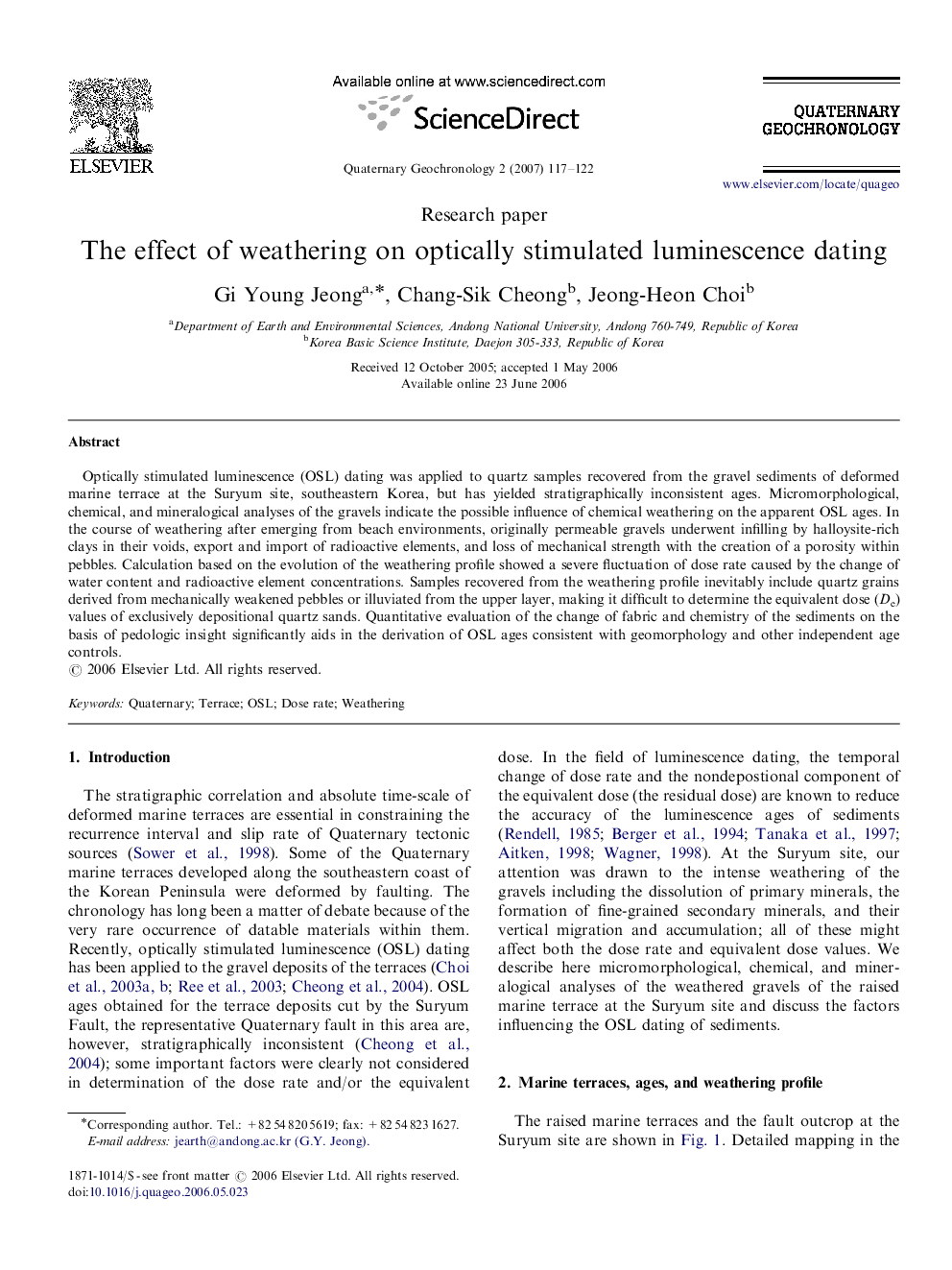| Article ID | Journal | Published Year | Pages | File Type |
|---|---|---|---|---|
| 4725391 | Quaternary Geochronology | 2007 | 6 Pages |
Optically stimulated luminescence (OSL) dating was applied to quartz samples recovered from the gravel sediments of deformed marine terrace at the Suryum site, southeastern Korea, but has yielded stratigraphically inconsistent ages. Micromorphological, chemical, and mineralogical analyses of the gravels indicate the possible influence of chemical weathering on the apparent OSL ages. In the course of weathering after emerging from beach environments, originally permeable gravels underwent infilling by halloysite-rich clays in their voids, export and import of radioactive elements, and loss of mechanical strength with the creation of a porosity within pebbles. Calculation based on the evolution of the weathering profile showed a severe fluctuation of dose rate caused by the change of water content and radioactive element concentrations. Samples recovered from the weathering profile inevitably include quartz grains derived from mechanically weakened pebbles or illuviated from the upper layer, making it difficult to determine the equivalent dose (De) values of exclusively depositional quartz sands. Quantitative evaluation of the change of fabric and chemistry of the sediments on the basis of pedologic insight significantly aids in the derivation of OSL ages consistent with geomorphology and other independent age controls.
